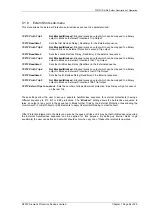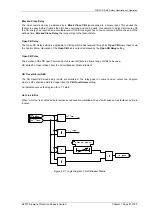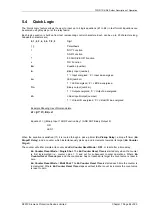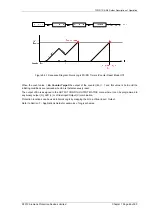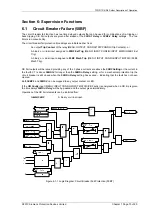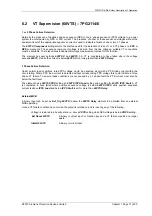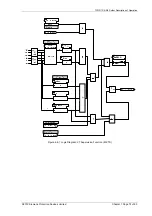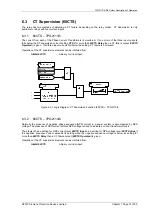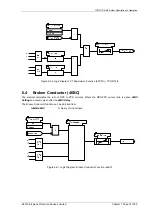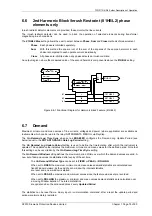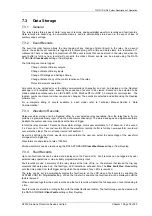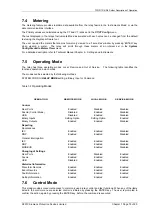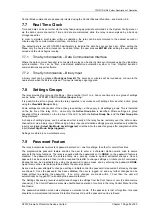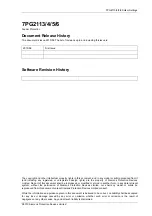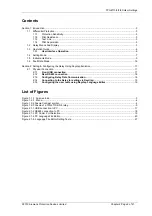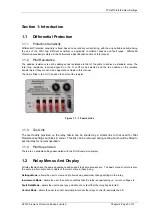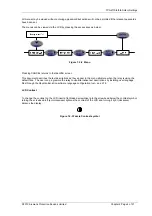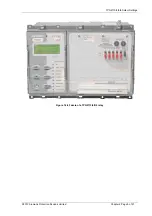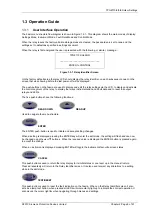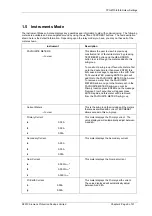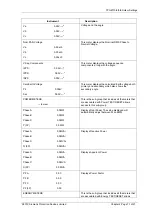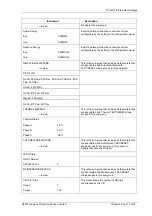
7PG2113/4/5/6 Solkor Description of Operation
©2010 Siemens Protection Devices Limited Chapter 1 Page 77 of 80
Section 7: Other Features
7.1
Data Communications
Two communication ports, COM1 and COM2 are provided. RS485 connections are available on the terminal
blocks at the rear of the relay (COM1). A USB port, (COM 2), is provided at the front of the relay for local access
using a PC.
Communication is compatible with Modbus-RTU, IEC60870-5-103 FT 1.2 and DNP 3.0 transmission and
application standards.
For communication with the relay via a PC (personal computer) a user-friendly software package, Reydisp, is
available to allow transfer of relay settings, waveform records, event records, fault data records,
Instruments/meters and control functions. Reydisp is compatible with IEC60870-5-103.
Data communications operation is described in detail in Section 4 of this manual.
7.2
CB Maintenance
7.2.1 Output Matrix Test
The feature is only visible from the Relay fascia and allows the user to operate the relays functions. The test of
the function will automatically operate any Binary Inputs or LED’s already assigned to that function.
Any protection function which is enabled in the setting menu will appear in the Output Matrix Test.
7.2.2 CB Counters
The following CB maintenance counters are provided:
CB Total Trip Count:
Increments on each trip command issued.
CB Delta Trip Count:
Additional counter which can be reset independently of the
Total Trip Counter. This can be used, for example, for
recording trip operations between visits to a substation.
CB Count to AR Block:
Displays the number of CB trips experienced by the CB
before the AR is blocked. When the target is reached the
relay will only do 1 Delayed Trip to Lockout.
CB Frequent Ops Count
Logs the number of trip operations in a rolling window period
of one hour.
A CB Trip Time meter is also available, which measures the time between the trip being issued and the
auxiliary contacts changing state.
Binary outputs can be mapped to each of the above counters, these outputs are energised when the user
defined
Count Target
or
Alarm Limit
is reached.
Table 7-1
CB Counters
7.2.3 I
2
t CB Wear
An I
2
t counter is also included, this can provide an estimation of contact wear and maintenance requirements. The
algorithm works on a per phase basis, measuring the arcing current during faults. The I
2
t value at the time of trip
is added to the previously stored value and an alarm is given when any one of the three phase running counts
exceeds the set
Alarm limit
. The t value is the time between CB contacts separation when an arc is formed,
Separation Time,
and the CB
Clearance time
.


